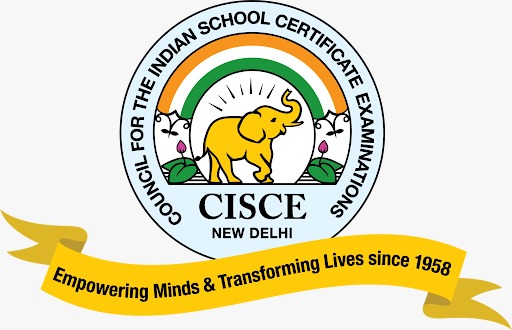Introduction
When we think of education, we often picture books, exams, and report cards. But education in its true sense goes far beyond academics. As the world becomes more complex, uncertain, and emotionally demanding, it’s clear that academic knowledge alone isn’t enough. Holistic education is an approach that recognizes the need to nurture all dimensions of a child—emotional, social, physical, intellectual, and spiritual.
It’s about preparing children not just for tests, but for life. From making ethical choices to collaborating effectively, solving real-world problems to building emotional resilience, holistic learning equips children with the tools they need to thrive in every area of life.
Let’s explore how this powerful educational model is changing the way we shape the next generation.
Why Holistic Education Matters in the 21st Century
Modern challenges demand more than just cognitive skills. A student may excel in math or science, but if they struggle to manage stress, resolve conflicts, or express themselves, they will likely face difficulties navigating adult life.
Holistic education fills this gap. It nurtures not only a student’s intellect but also their ability to:
- Handle emotions with maturity
- Communicate effectively and compassionately
- Make ethical decisions in a complex world
- Think creatively and independently
- Build meaningful relationships
- Stay physically and mentally balanced
By fostering whole child development, this approach creates well-rounded individuals who are not only job-ready but also life-ready.
The Core Components of Holistic Education
Emotional Growth
Children today face emotional stress from academic pressure, social media, and peer expectations. Holistic education integrates mindfulness, reflective journaling, and discussions about feelings into the daily curriculum. This helps children understand, manage, and express their emotions in healthy ways—skills that reduce anxiety and improve overall well-being.
Social & Interpersonal Development
Humans are inherently social beings, and learning how to interact with others respectfully and confidently is crucial. Group projects, collaborative learning, and community service allow students to develop empathy, active listening, and teamwork. These skills are foundational for success in both personal and professional relationships.
Physical and Mental Wellness
Holistic schools understand that a healthy body supports a healthy mind. Regular physical activity, yoga, and lessons in nutrition are essential elements of a balanced education. This focus on wellness helps students stay energized, attentive, and mentally strong.
Creative Expression & Imagination
Creativity isn’t just for artists. It plays a role in problem-solving, innovation, and confidence. Through drama, visual arts, storytelling, and music, holistic education allows children to express themselves and explore new perspectives.
Ethical and Civic Awareness
At the heart of holistic education lies character-building. Lessons in kindness, sustainability, integrity, and civic responsibility teach children that success isn’t just about personal achievement—it’s about making the world better for others too.
How Holistic Education Prepares Children for Real Life
Resilience and Adaptability
Life is unpredictable. Holistic education doesn’t just teach students what to think but how to think—critically, creatively, and independently. Children learn how to navigate failure, adapt to change, and persevere through challenges without giving up.
Stronger Decision-Making and Problem-Solving
Through inquiry-based learning and experiential activities, students develop decision-making skills rooted in ethical reasoning and logic. They’re encouraged to explore problems from multiple angles, work collaboratively, and come up with practical solutions. These are core aspects of evolving teaching and learning models worldwide.
Confidence to Express Ideas and Take Initiative
Whether it’s giving a speech, organizing a campaign, or launching a small project, holistic education creates confident communicators who are unafraid to share their voice and lead with integrity.
Preparation for Diverse Careers
The workforce of the future demands more than just technical skills. Holistic education helps children grow into professionals who are emotionally intelligent, culturally sensitive, and capable of learning continuously throughout their careers.
The Role of Teachers in Holistic Education
In holistic education, the teacher is not just an instructor—they are a mentor, guide, and co-learner. Their role transcends delivering lectures and grading papers. Instead, they foster an environment where every child feels seen, heard, and supported.
Holistic teachers are deeply attuned to their students’ emotional and social needs. They create safe spaces for expression, encourage curiosity, and nurture intrinsic motivation. By practicing active listening, offering individualized feedback, and modeling empathy and patience, teachers help students develop life skills that can’t be found in textbooks.
For example, during a group project, a holistic teacher won’t just assess the final product. They’ll observe how students collaborate, handle conflict, manage time, and reflect on the process. These subtle yet powerful interactions are at the core of life-long learning and effective time management.
By developing a strong teacher-student relationship, holistic educators ensure that each child is supported not only in their academic growth but also in becoming confident, self-aware individuals.
Common Myths About Holistic Education – Debunked!
Myth 1: It’s not academically rigorous
Many assume that because holistic education includes arts, mindfulness, or life skills, it downplays academics. In reality, it enhances academic achievement. When students feel mentally and emotionally safe, they focus better, take ownership of learning, and perform more consistently.
Myth 2: It’s too abstract or unstructured
Holistic learning may look different from traditional education, but it’s built on well-researched, intentional strategies. Activities are carefully designed to develop specific competencies—academic, emotional, and ethical.
Myth 3: It’s only for “creative” students
Far from it. Every child benefits from emotional balance, social skills, and life readiness. Whether a child is academically inclined or prefers hands-on learning, the holistic model adapts to different strengths and helps every learner shine.
Myth 4: It doesn’t prepare students for the ‘real world’
On the contrary, holistic education may be the best preparation for real life. Careers today require adaptability, critical thinking, collaboration, and empathy—exactly what this model fosters. It reveals the real power of education in shaping humanity.
How Schools Are Embracing Holistic Learning
Top CBSE and international institutions such as the best international schools in Whitefield are redefining education by making holistic practices part of daily learning. These institutions integrate academics with:
- Social-emotional learning (SEL) programs
- Mindfulness periods and meditation
- Community engagement and volunteerism
- Performing and visual arts
- Outdoor learning and environmental awareness
They also involve parents in workshops and provide teacher training to create a cohesive support system around every child.
Bringing Holistic Education Home: Tips for Parents
Parents play a vital role in reinforcing holistic values at home. You can:
- Encourage open conversations about feelings and daily experiences
- Limit screen time and promote outdoor play or creative hobbies
- Involve children in decision-making to build independence
- Read together and discuss ethical dilemmas in stories
- Model mindfulness through gratitude rituals or breathing exercises
By aligning home and school efforts, children learn consistency in how they grow emotionally, socially, and intellectually.
Conclusion
Holistic education is a powerful reminder that children are more than just students—they are future citizens, thinkers, creators, and leaders. By going beyond books, tests, and rankings, we prepare them for a life filled with meaningful relationships, ethical decisions, resilience, and joy.
As more schools and families adopt this approach, we pave the way for a generation that is not just capable—but compassionate, confident, and whole.
FAQs
What is holistic education in simple terms?
Holistic education is a teaching approach that develops all aspects of a child—mind, body, emotions, and spirit—not just academic knowledge.
Is holistic education effective for academic performance?
Yes, students in holistic systems often perform better because they are more motivated, balanced, and focused.
Can any school implement holistic learning?
Absolutely. It begins with a shift in mindset and curriculum design. Even traditional schools can integrate holistic practices gradually.
Is holistic education suitable for teenagers or older students?
Yes. In fact, older students benefit greatly from self-awareness practices, ethical debates, and life-skills training as they prepare for adulthood.
What are some real-world examples of holistic education?
Schools that include emotional learning, creativity, service projects, and wellness programs as part of their curriculum are using holistic education. Many international and progressive schools in India follow this model.







